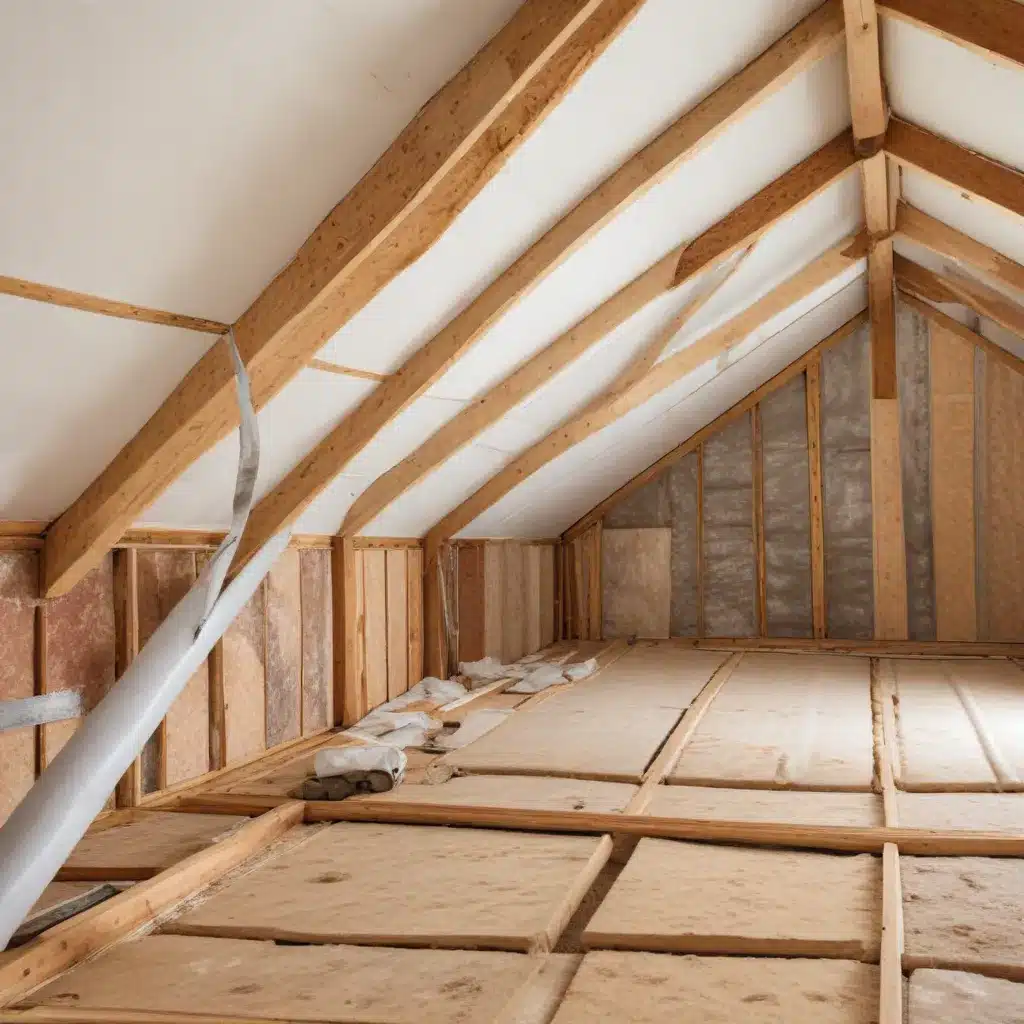As an experienced home improvement consultant, I’m often asked about the best ways to upgrade home insulation in an eco-friendly manner. Insulation plays a crucial role in improving a home’s energy efficiency, reducing utility costs, and creating a more comfortable living environment. In this comprehensive guide, I’ll explore various sustainable insulation materials, discuss strategies for boosting energy efficiency, examine the environmental impact of insulation, and share insights on available rebates and financing options.
Sustainable Insulation Materials
When it comes to eco-friendly insulation, homeowners have several natural and recycled options that outperform traditional insulation in terms of sustainability and indoor air quality.
Natural Fiber Insulation: Materials like cotton, sheep’s wool, and hemp offer excellent thermal performance and moisture management capabilities. These renewable resources are biodegradable, have low embodied energy, and often contain recycled content.
Cellulose Insulation: Made from recycled newsprint or other cellulose-based materials, cellulose insulation is treated with fire-retardant and anti-microbial additives. It provides effective air sealing and can be installed in both new construction and existing homes.
Mineral Wool Insulation: Also known as rock wool or slag wool, this insulation is composed of natural minerals and recycled industrial waste. Mineral wool offers superior fire resistance, sound absorption, and moisture resistance properties.
When selecting insulation, it’s crucial to consider the R-value (thermal resistance) and the material’s ability to manage moisture effectively. High-performing insulation not only reduces energy consumption but also helps prevent mold, mildew, and other indoor air quality issues.
Improving Energy Efficiency
Upgrading your home’s insulation can significantly improve its overall energy efficiency, leading to long-term cost savings and environmental benefits.
Insulation Upgrades for Existing Homes
For homeowners with an existing property, there are several insulation enhancement strategies to consider:
Attic Insulation Enhancements: Properly insulating the attic is one of the most effective ways to reduce heat transfer, as heat naturally rises. Topping up existing insulation or installing new blown-in cellulose or fiberglass insulation can dramatically improve energy efficiency.
Wall Cavity Insulation Retrofits: Older homes often have inadequate or no insulation in the wall cavities. By carefully accessing these spaces, homeowners can have spray foam or dense-packed cellulose insulation installed to create a highly airtight and well-insulated building envelope.
Insulation in New Home Construction
When building a new home, an integrated design approach that prioritizes energy efficiency from the ground up is crucial. This includes:
High-Performance Envelope Strategies: Designing a well-insulated, air-sealed building envelope using a combination of rigid foam, batt insulation, and air barriers can create a highly efficient home with minimal heat loss or gain.
Balanced Ventilation Systems: Incorporating energy recovery ventilators (ERVs) or heat recovery ventilators (HRVs) ensures a continuous supply of fresh, filtered air while minimizing energy losses.
By taking a comprehensive approach to insulation and energy-efficient design, homeowners can create a comfortable, durable, and eco-friendly living space that delivers long-term cost savings.
Environmental Impact of Insulation
The choice of insulation materials can have a significant impact on a home’s environmental footprint. Understanding the embodied energy and carbon emissions associated with different insulation options is essential for making informed, sustainable decisions.
Embodied Energy and Carbon Footprint
Life Cycle Assessment (LCA) studies have shown that natural, recycled, and low-emitting insulation materials generally have a lower carbon footprint compared to traditional fiberglass or rigid foam insulation. This is due to factors like renewable resource extraction, reduced manufacturing emissions, and easier recyclability at the end of the product’s life cycle.
Healthier Indoor Air Quality
Many conventional insulation materials, such as fiberglass and spray foam, can release volatile organic compounds (VOCs) and other harmful chemicals into the indoor environment. These emissions can negatively impact air quality and human health. Eco-friendly insulation alternatives, like cotton, mineral wool, and cellulose, are often low-VOC or VOC-free, contributing to a healthier living space.
By prioritizing sustainable insulation materials and considering the full life cycle impact, homeowners can make more informed choices that reduce their environmental footprint while creating a comfortable, energy-efficient home.
Insulation Rebates and Incentives
Upgrading your home’s insulation can be a significant investment, but fortunately, there are various government and utility-backed programs that offer financial assistance to help offset the costs.
Government Energy Efficiency Programs
The U.S. Department of Energy and many state and local governments provide tax credits, rebates, and other incentives for homeowners who implement energy-efficient home improvements, including insulation upgrades. The IRS Energy Efficient Home Improvement Credit offers up to $3,200 in annual tax credits for qualified insulation and other energy-saving projects.
Utility Rebate Opportunities
Many utility companies also offer rebate programs for customers who upgrade their home’s insulation and other energy-efficient features. These programs can provide significant financial assistance, making eco-friendly renovations more accessible.
Financing Insulation Upgrades
For homeowners who need additional financial support, there are home improvement loans and energy efficiency mortgages available that can be used to finance insulation upgrades and other sustainable home improvements. These financing options can help bridge the gap between the upfront costs and the long-term energy savings.
By taking advantage of these rebates, incentives, and financing options, homeowners can make eco-friendly insulation upgrades more affordable and accessible, ultimately reducing their environmental impact and enjoying the benefits of a more energy-efficient home.
Upgrading your home’s insulation is a smart and eco-friendly investment that can deliver substantial long-term benefits. By selecting sustainable insulation materials, improving overall energy efficiency, and understanding the environmental impact of your choices, you can create a comfortable, healthy, and environmentally conscious living space. And with the help of available rebates, incentives, and financing options, these upgrades become more accessible than ever before.
If you’re ready to embark on your own eco-friendly insulation project, be sure to visit Reluctant Renovator for more expert tips, product reviews, and inspiration. Together, we can make a positive difference in our homes and communities.




